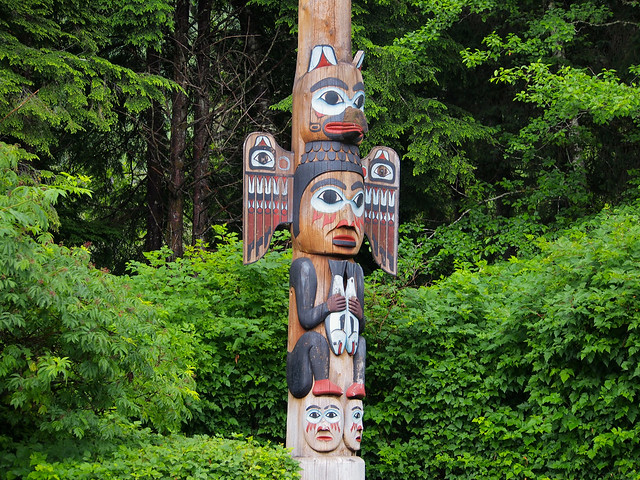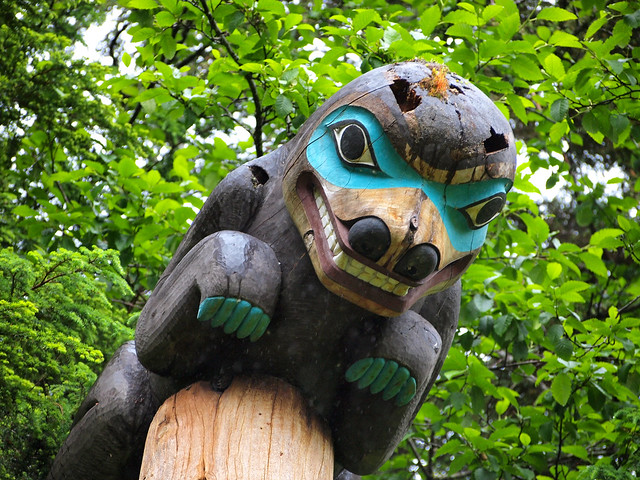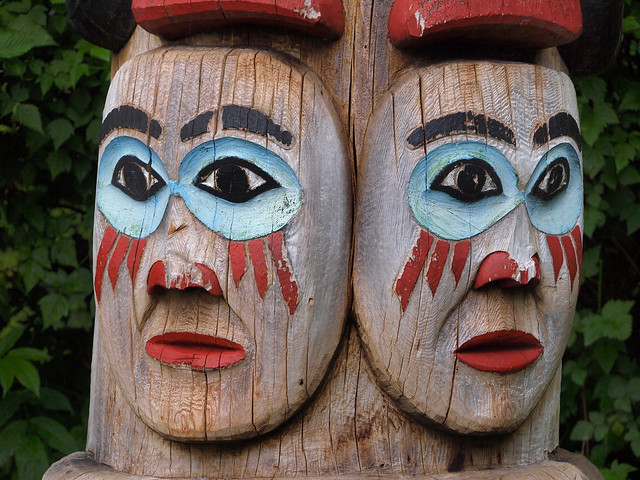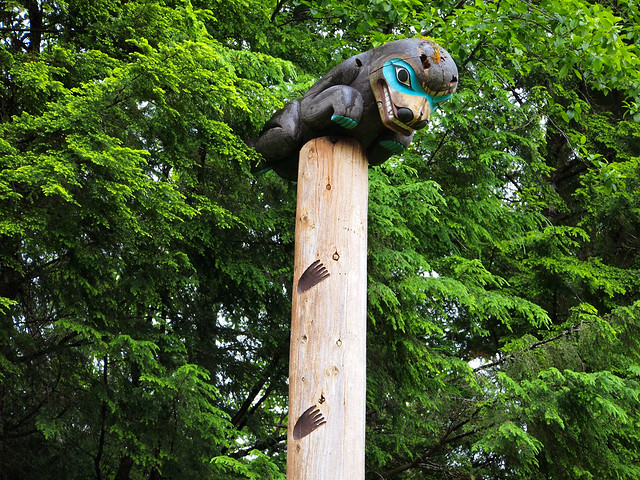The Legend of Kaats and Why Ketchikan is So Rainy
Ketchikan, Alaska, is known for a handful of things.
There's the famous Great Alaskan Lumberjack Show. The stores up on stilts. Long, steep staircases that are actually considered streets, complete with road signs. And the largest collection of standing totem poles in the world.

And the rain. Ketchikan is known for its rain.
Thanks to its location between the sea and mountains, Ketchikan can get rather soggy. And, while this weather trend can easily be explained by science, I learned about a local Tlingit legend when I was at Totem Bight State Park that I like a whole lot better.
The Legend of Kaats
There once was a great Tlingit hunter named Kaats. He was so talented at hunting and trapping and fishing that nobody else in his village ever had to worry about gathering food.
One day Kaats was hunting deep in the forest and came upon a fierce she-bear. But this bear was also a shape-shifter. And, upon seeing the mighty Kaats, she changed into her human form.
Even though Kaats had a wife down in his village, he immediately fell in love with the she-bear's human form, and he decided to stay with her in the forest.
They were happy for a long time, and the she-bear bore Kaats three bear cubs.

But then one day when Kaats was out hunting, he ran into another man from his former village. The man told him that the village was suffering after Kaats' disappearance, since nobody there knew how to hunt or fish. Many of them were starving.
Kaats returned to his bear-wife feeling guilty. He begged her for permission to return to his village to teach them how to hunt and fish. The bear wife agreed — under one condition. Kaats could return to his village, but he could have no contact with his human wife. If he did, his bear-wife warned, she would find out.
Kaats made the promise, and returned to the village the next day. He spent time teaching the villagers how to hunt and trap and fish, all the while doing everything he could to avoid his human wife. He succeeded in avoiding her — until he was on his way out of the village.
As he was leaving, Kaats' human wife leapt out from behind some bushes, surprising him. Kaats immediately left. And his bear-wife immediately knew.

Kaats' bear-wife also knew that this encounter was not her husband's fault, however. And she had every intention of forgiving him.
But the bear-wife liked to play practical jokes. So, when Kaats came home, she pretended to be very angry.
Hearing their parents fighting, the couple's cubs didn't realize that the bear-wife was just playing, and they attacked Kaats, killing him.
The bear-wife was so heartbroken after the death of her beloved Kaats that she left the forest and climbed to the top of the tallest nearby mountain. There, she began to cry. She cried and cried and cried, and legend has it that her tears never stopped falling on the town of Ketchikan.

The importance of these stories
I LOVE learning about native legends like this one — and we heard tons more at Totem Bight State Park. For some reason, though, this is the one that stuck with me the most.
I think it's really important that we do our best to seek out these sorts of stories when we travel; these stories from indigenous peoples have often been passed down orally for generations, and are an important part of a place's identity.
Ketchikan served as a summer fish camp for the native Tlingit people for a long time before a white man came in and established a town there. The fact that the area now preserves some of that old culture is great, and I highly recommend visiting the totem poles at Saxman Totem Park, Totem Bight State Park, Potlatch Park, and the Totem Heritage Center in Ketchikan.
Some of the totem poles you'll find are re-carvings of older poles, but the stories and sentiments remain the same.
Make time to visit these spots and learn some of these stories. Just don't be surprised if you're doing it all in the rain.
Read more Alaska stories here!
Comments
Post a Comment